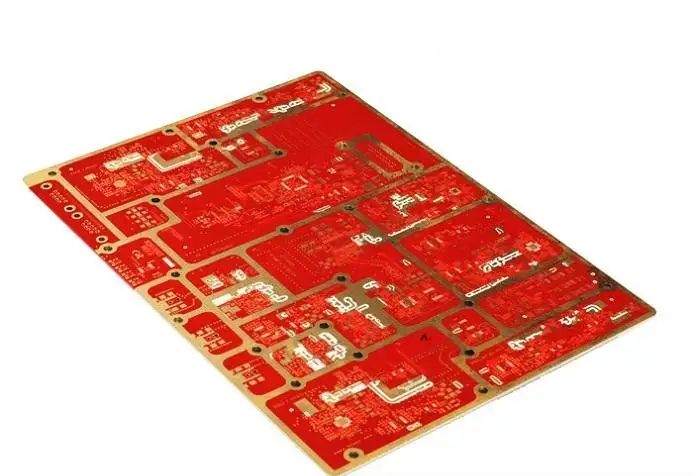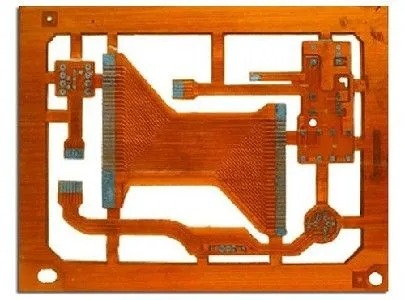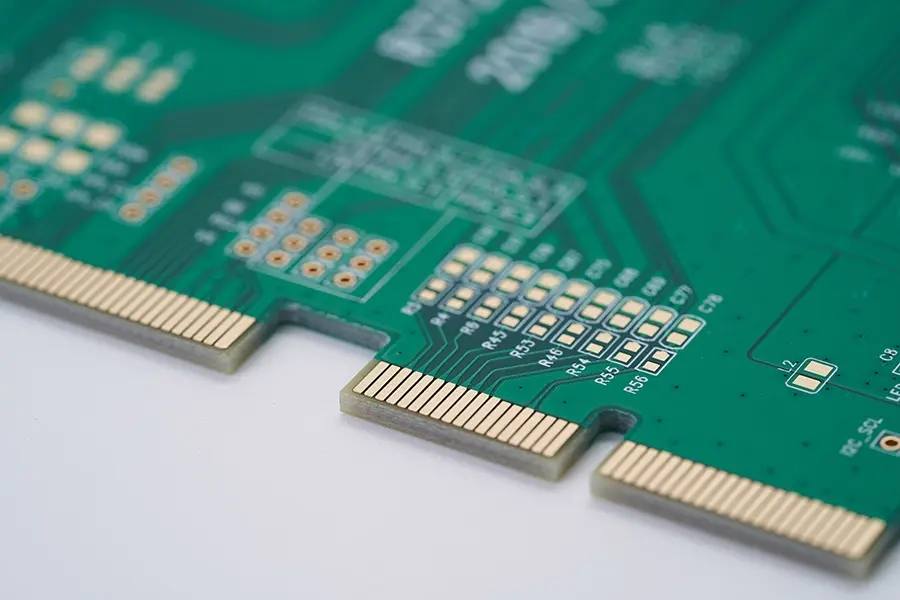
Expert solutions to high-speed circuit board design methods Part 3
20. For high-speed digital PCB, what is the principle of properly selecting the grounding point between PCB and housing? In addition, PCB LAYOUT engineers generally follow the DESIGN GUIDE/LAYOUT GUIDELINE. I want to know whether it is a hardware/system engineer or a senior PCB engineer who generally formulates the GUIDE? Who should be primarily responsible for the performance of the board level system. thank you!
Expert answer:
The principle of selecting the grounding point with the enclosure is to use the chassis ground to provide a path with low impedance to the return current and control the path of the return current. For example, it is usually possible to connect the PCB floor with the chassis ground near the high-frequency device or clock generator by using the fixing screws to minimize the area of the entire current loop, and thus reduce electromagnetic radiation.
Who should be responsible for making guideline? Each company may have different arrangements due to different situations. The formulation of the guideline must have a full understanding of the whole system, chip and circuit action principle, so as to formulate a guideline that conforms to the electrical specification and can be realized. Therefore, from my personal point of view, hardware system engineer seems to be more suitable for this role. Of course, senior PCB engineers can provide experience in actual implementation, so that the guideline can be implemented better.
21. Circuit board DEBUG should start from those aspects. What aspects should DEBUG start from when the board is designed and produced.
Expert answer:
As far as digital circuits are concerned, first determine three things in sequence:
1. Confirm that all power values meet the design requirements. Some systems with multiple power supplies may require some specifications for the sequence and speed of the power supplies.
2. Confirm that all clock signal frequencies work normally and there is no non monotonic problem on the signal edge.
3. Confirm whether the reset signal meets the specification requirements.
If all these are normal, the chip should send the first cycle signal. Next, debug according to the system operation principle and bus protocol.
22. How can the commonly used electronic PCB design software meet the requirements of circuit anti-interference? What PCB design software do you have now? How to use PROTEL99 to reasonably design PCBs that meet your requirements For example, how to meet the requirements of high-frequency circuits, and how to consider that the circuits meet the requirements of anti-interference? thank you!!
Expert answer:
I have no experience in using Protel. I will discuss the design principles below.
High frequency digital circuit mainly considers the influence of transmission line effect on signal quality and timing. For example, the continuity and matching of characteristic impedance, the selection of termination mode, the selection of topology mode, the length and spacing of routing, the control of clock (or strobe) signal skew, etc.
If the device has been fixed, the general anti-interference method is to increase the spacing or add ground guard traces.

23. Please consult the wiring density When the size of the circuit board is fixed, if more functions need to be included in the design, it is often necessary to increase the wiring density of the PCB, but this may lead to increased mutual interference of the wiring, and at the same time, the impedance cannot be reduced if the wiring is too thin. Please introduce the skills in high-speed (>100MHz) high-density PCB design?
Expert answer:
When designing high-speed and high-density PCBs, we should pay special attention to crosstalk because it has a great impact on timing and signal integrity. The following points should be noted:
1. Control continuity and matching of characteristic impedance of wiring.
2. Size of wiring spacing. Generally, the spacing is twice the line width. Through simulation, we can know the influence of routing distance on timing and signal integrity, and find out the minimum tolerable distance. Different chip signals may have different results.
3. Select an appropriate termination method.
4. Avoid the same routing direction of the upper and lower adjacent layers, or even the overlapping of the upper and lower layers, because this kind of crosstalk is greater than the adjacent routing of the same layer.
5. Use blind/buried via to increase wiring area. However, the production cost of PCB will increase.
It is really difficult to achieve full parallelism and equal length in actual implementation, but we should try our best to do so. In addition, differential termination and common mode termination can be reserved to mitigate the impact on timing and signal integrity.
24. Wiring of lvds signal For low-voltage differential signal of lvds, in principle, the wiring is of equal length and parallel, but in fact, it is difficult to achieve. Can you provide some experience? Is there a trial version of your product?
Expert answer:
The reasons why differential signal wiring requires equal length and parallelism are as follows:
1. The purpose of parallelism is to ensure the integrity of differential impedance. Where the parallel spacing is different, the differential impedance is discontinuous.
2. The purpose of equal length is to ensure the accuracy and symmetry of timing. Because the timing of differential signals is related to the intersection of these two signals (or the relative voltage difference), if the length is not equal, the intersection will not appear in the middle of the signal amplitude, and will also cause the asymmetry of two adjacent time intervals, increasing the difficulty of time sequence control.
3. Unequal length will also increase the composition of common mode signals, affecting signal integrity.
25. Pay attention to power filter Excuse me, the filter at the analog power supply usually uses LC circuit. However, I found that sometimes LC filtering is worse than RC filtering. Why? What is the method of selecting inductance and capacitance values when filtering?
Expert answer:
The comparison of LC and RC filtering effects must consider whether the frequency band to be filtered and the inductance value are properly selected. Because the inductance is related to the inductance value and frequency. If the noise frequency of the power supply is low and the inductance value is not large enough, the filtering effect may not be as good as RC. However, the cost of using RC filtering is that the resistor itself will consume energy, and the efficiency is poor. In addition, attention should be paid to the power that the selected resistor can withstand.
The selection of inductance value shall consider not only the noise frequency to be filtered, but also the reaction ability of instantaneous current. If the LC output terminal has the opportunity to output a large current instantaneously, the inductance value is too large to hinder the speed of this large current flowing through the inductor, increasing ripple noise.
The capacitance value is related to the ripple noise specification value that can be tolerated. The smaller the ripple noise value is required, the larger the capacitance value will be. The capacitor ESR/ESL will also have an impact.
In addition, if the LC is placed at the output end of the switching regulation power, pay attention to the influence of the pole/zero generated by the LC on the stability of the negative feedback control circuit.
26. Evaluation on EDA design software Recently, I heard that Valor, an Israeli company, tried to promote PCB layout solution in China. How about its products?
Expert answer:
Sorry, I am not suitable to comment on other competitors' products on this occasion. I think the suitability of any EDA software product is related to the characteristics of the product to be designed. For example, whether the routing density of the designed product is high may have different requirements for the pushing function of the winding engine. The following only provide some directions for consideration:
1. Whether the user's interface is easy to operate.
2. The ability to push the wire (this item relates to the strength of the winding engine)
3. The difficulty of laying copper foil and editing copper foil
4. Whether the setting of routing rules meets the design requirements
5. Type of organization chart interface.
6. Is it easy to create, manage and call the part library
7. Whether the ability to check design errors is perfect
27. What problems should be paid attention to in pcb design?
Expert answer:
The problems to be noticed in PCB design vary with the application of different products. Just like digital circuit and analog circuit have different points to pay attention to. The following are just a few principles to note.
1. PCB stacking decision; It includes the arrangement of power layer, stratum and routing layer, and the routing direction of each routing layer. These will affect the signal quality, even electromagnetic radiation problems.
2. The wiring and vias (via) related to power supply and ground shall be as wide and large as possible.
3. Regional configuration of circuits with different characteristics. Good regional configuration has a great influence on the difficulty of routing and even the signal quality.
4. The DRC (Design Rule Check) and test related designs (such as test points) shall be set according to the manufacturing process of the production factory.
Other problems related to electricity have an absolute relationship with the circuit characteristics. For example, even if it is a digital circuit, whether to pay attention to the characteristic impedance of the wiring depends on the speed and length of the circuit.
28. GSM mobile phone PCB design. What are the requirements and skills of experts in GSM mobile phone PCB design?
Expert answer:
The challenges of mobile phone PCB design lie in two aspects: the first is the small board area, and the second is the circuit with RF. Because the available board area is limited, and there are several circuit areas with different characteristics, such as RF circuit, power circuit, voice analog circuit, general digital circuit, etc., they all have different design requirements.
1. First, RF and non RF circuits must be properly separated on the board. Because RF power, ground and impedance design specifications are strict.
2. Because the plate area is small, blind/buried via may be required to increase the routing area.
3. Pay attention to the routing of voice analog circuits, and avoid crosstalk caused by other digital circuits, RF circuits, etc. In addition to widening the cable spacing, ground guard trace can also be used to suppress crosstalk.
4. Stratigraphic segmentation shall be properly done, especially for the ground of analog circuit, so as not to be interfered by the ground noise of other circuits.
5. Pay attention to the return current path of signals in each circuit area to avoid increasing the possibility of crosstalk. Circuit board assembly, circuit board design, and circuit board processing manufacturers explain high-speed circuit board design methods. Part 3: Expert answers.









